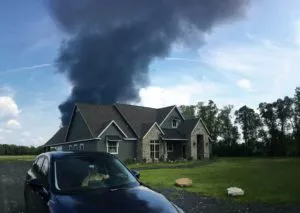Nursing Home Abuse
Long-Term Care in Nursing Homes
The population of elderly citizens in our country is growing. When your parents get older, home and lifestyle options available to them inevitably reduce in number as they become more dependent on others for their care. An older person’s level of necessary healthcare is often a determining factor when you have to decide whether or not to put them into a long-term care facility.
The decision to put your vulnerable loved one into a nursing home can be an extremely difficult choice to regardless of the level of care required. Sometimes you have no other options.
A nursing home is a facility that provides skilled nursing and end-of-life care for the elderly. Most nursing homes are for-profit entities. We pay these facilities a great deal of money each year and entrust them with our loved ones’ healthcare and general welfare. The hope is to pick the facility that will provide the best, loving, attentive care – especially since annual nursing home costs generally range from $40,000 to $70,000.
According to a 2004 CDC study, there were 1.5 million nursing home residents in the nation. That same study notes that a majority of the residents were 65 or over and that almost 34% had fallen within 180 days of the study.
When bad things happen to our loved ones in nursing homes, rehabilitation facilities, hospices or other managed care facilities, the initial question is whether the fall, the broken bone, the pressure sore, the medication overdose, or the death was one of pure accident or abuse or neglect. Other tragic events that have been known happen to some nursing home residents include assault, malnutrition, dehydration, mental/emotional abuse, involuntary seclusion, and sexual abuse.
Our elderly deserve to spend the end of their lives in quiet, peaceful, environments free of abuse or neglect. The facilities that take your loved one’s hard-earned money and then fail to sustain the standard of care they are required or expected to provide must be held responsible for any mistreatment/abuse or accidents that occur due to neglect. Whether injuries are the result of hiring inexperienced or violent people, or even too few people, facilities are responsible for the damages to their elderly residents and their families.
Nursing Home Facility Standards
Under the Omnibus Reconciliation Act of 1987 (OBRA), 42 U.S.C. § 1395 – 1396 (1999), nursing homes are licensed and highly monitored by the State of Texas. Every year, the State inspects each home and prepares a survey report. This report lists the violations, or F-tags, for the facilities and the things the facilities did to change or repair the violations. According to the Texas Attorney General, “Standards exist for several areas, including nursing care, quality of life, dietary services, physician services, rehabilitative services, infection control, pharmacy services, facility management and observation of resident rights.”
The Law Concerning Nursing Home Injuries
Bringing a lawsuit for a nursing home injury is usually a suit based in negligence. The statute of limitations, which is the amount of time you have to file a lawsuit for the wrong, is two years from the date of injury.
Chad Pinkerton is experienced in handling nursing home injury cases, and is trained to use his skill and experience to fight for you and your loved one’s rights – and to hold the right people responsible for the injury and losses. Chad’s medical training coupled with his legal expertise and experience make him the right representative to have on your side.
Money Damages from Nursing Home Injuries
Recovery of money can include present and future medical bills, and depending on the facts of the situation, mental pain and suffering damages, lost past and future wages, permanent impairment/disfigurement, punitive damages, wrongful death damages and loss of enjoyment of life.










